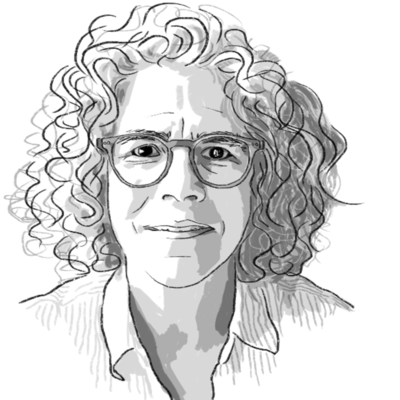After requests from the U.S. attorney general and President Donald Trump’s lawyers, the warrant for searching Mar-a-Lago was unsealed. The intense public interest speaks directly to the proper functioning of American democracy, which relies on truth and the rule of law.
Monitor Daily Podcast
- Follow us:
- Apple Podcasts
- Spotify
- RSS Feed
- Download
 Clara Germani
Clara Germani
Samsara Duffey’s view is rich and long. As I write this, she can see the smoke shelf above the 21,000-acre Elmo wildfire 70 miles from her Forest Service lookout cabin on Patrol Mountain in Montana.
But the “view” is more than geographic. It’s her commitment to wilderness that can inspire others to see further and climb their own mountains.
Ms. Duffey isn’t famous. But I feel sparks of borrowed light – even courage – from her profile in today’s Daily; it’s close to the fulfillment I get reading about other brave and thoughtful women, like the crusading journalist Ida B. Wells, the adventurer-diplomat Gertrude Bell, and primatologist Jane Goodall.
The writer I assigned to the profile – Noah Davis, a young, award-winning poet, essayist, and hunter-fisher-forager – recognized the “greatness” parallel. He told me he was moved by Ms. Goodall in her lecture this summer at the University of Montana. He says she and Ms. Duffey are “people of place.”
Ms. Goodall, he says, “knows the [African] continent; she knows the place, she knows the country that the chimpanzees live in. And Samsara knows the pika and the marmots and the wolverines. They understand these animals are more than probably what the most basic level of science sees them as.”
Ms. Duffey is known for her fearless bushwhacking exploration of land susceptible to fire. As useful and productive as it can be to follow the science and crunch the data, her kind of grounded wisdom may be a surer guide to the health of the high country where so many forms of life weave together.
Mr. Davis couldn’t squeeze Ms. Duffey’s sweet tooth into his story. But he likes to imagine her at season’s end on a cold autumn day baking blueberry bread in her little propane oven at 8,000 feet.
And I, too, think wistfully: There but for the daily deadlines, a thousand miles, and a 3,000-vertical-foot hike, go I.











